Best 3 channel dash cams in 2025
The best 3-channel dash cams for capturing footage from inside and outside of your vehicle
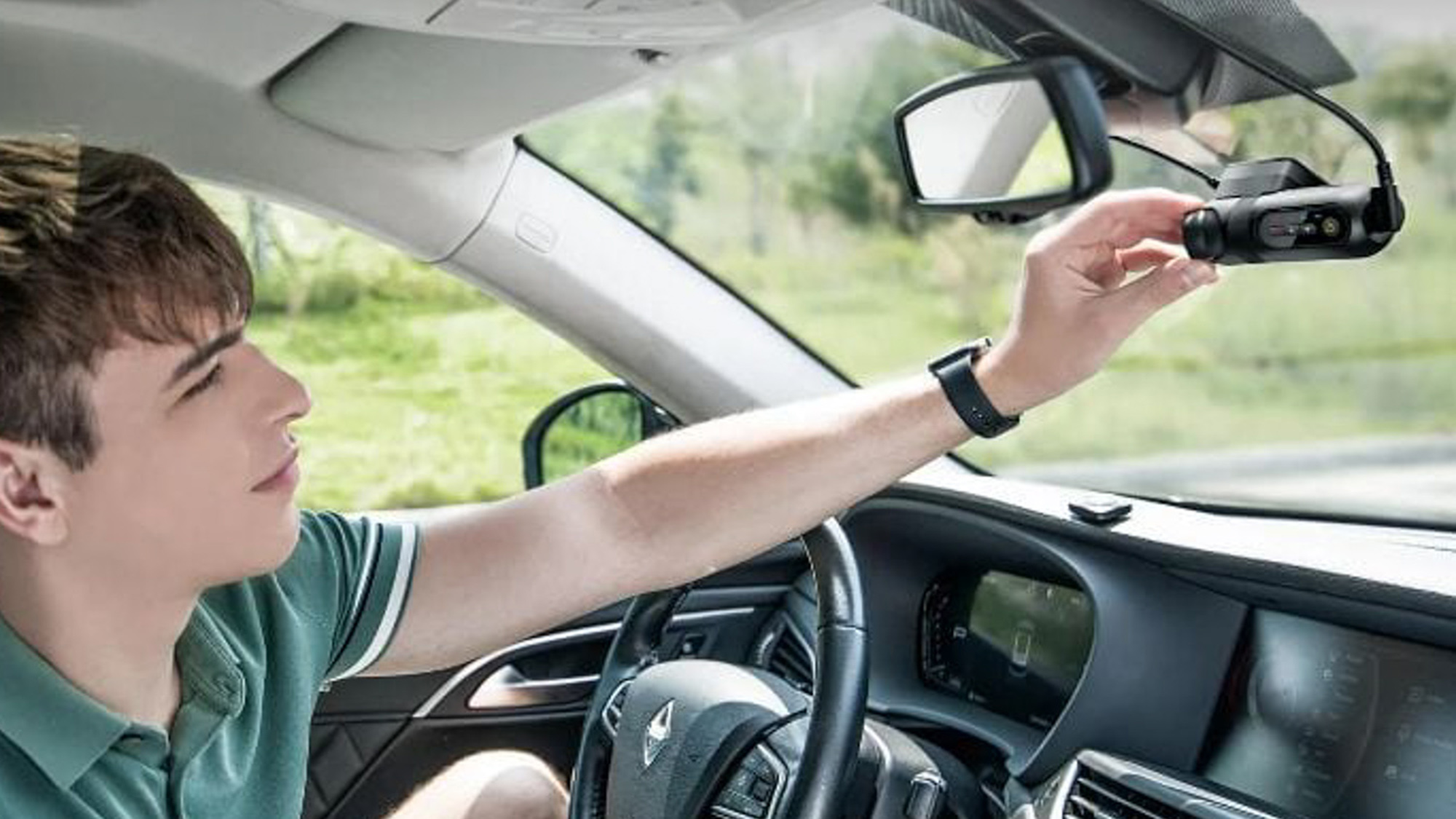
A three-channel dash cam is one that records forwards, rearwards and into the interior of your vehicle. They are rarer than the more common single- and dual-channel systems but can record the cabin of your car, as well as you, your passengers, and your surroundings.
The most obvious use case for a three-channel dash cam is if you are a taxi or ride-share driver. But non-professional drivers can also benefit from a three-channel system, since the interior camera might, for example, capture footage to prove you were paying attention and not to blame for a collision.
Three-channel dash cams can also act as security cameras for when your vehicle is parked. Models like the Nextbase iQ will alert you via their own 4G data connection when they detect a parking prang or potential break-in. You can then stream live video from the interior of your car, just as you would a video doorbell or security camera at home.
Most dash cams with interior cameras use infrared night vision to produce detailed footage, even from a dark interior at night. Some use an entirely separate camera to record the interior, while others take a modular approach, where the cabin camera attaches directly to the main unit. Others combine the front-facing and cabin cameras into one device.
To help you find the right one, we've put our expert knowledge and testing to work, and present the absolute best 3 channel dashcams in the list below. Alternatively, if you're a ridesharing driver for Uber, Lyft or a similar platform, check out our roundup of the best Uber dash cams.
The quick list
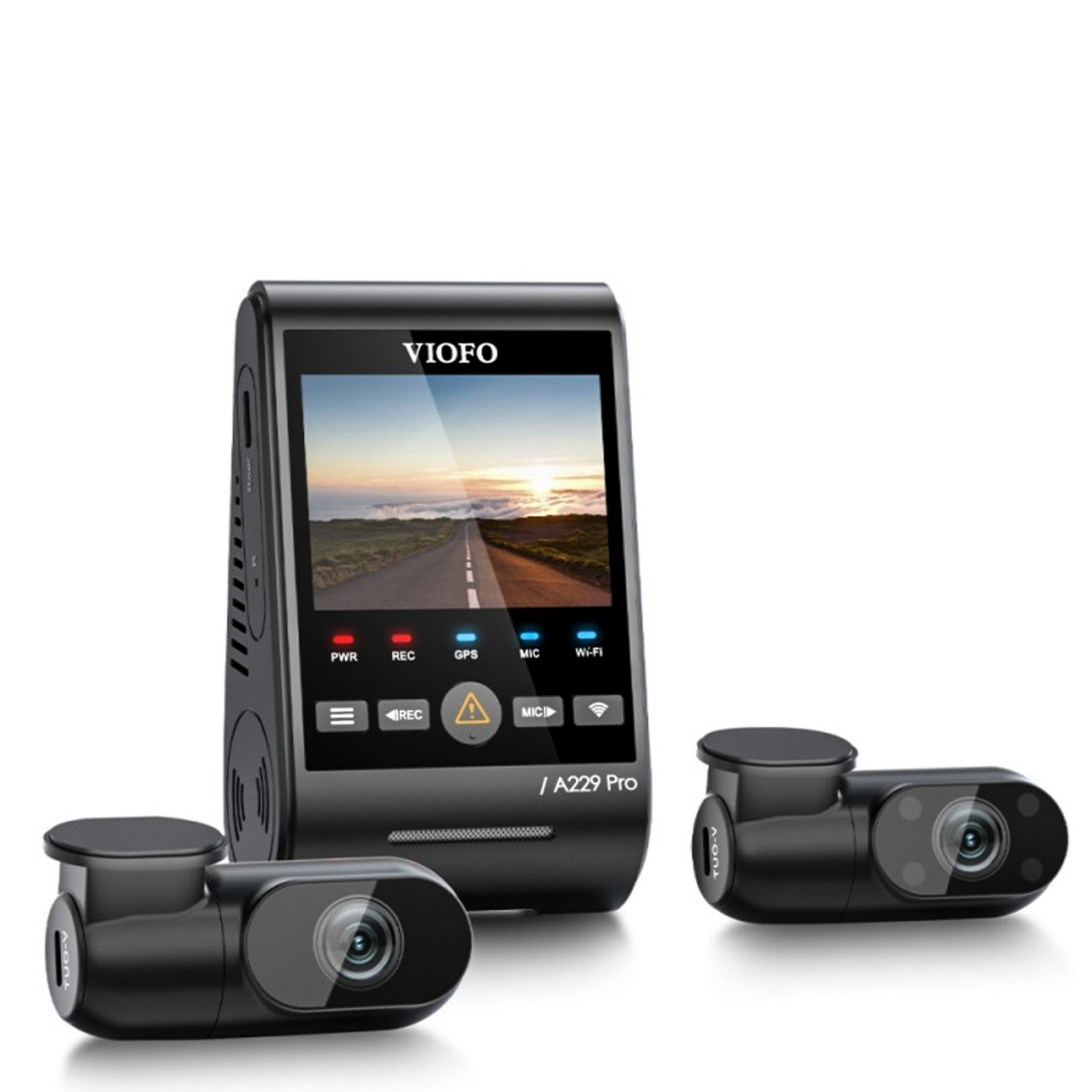
Best overall
4K resolution, the latest Sony Starvis sensor, a screen, HDR and a compact design all add up to making Viofo’s flagship model the best three-channel dash cam overall.
Read more
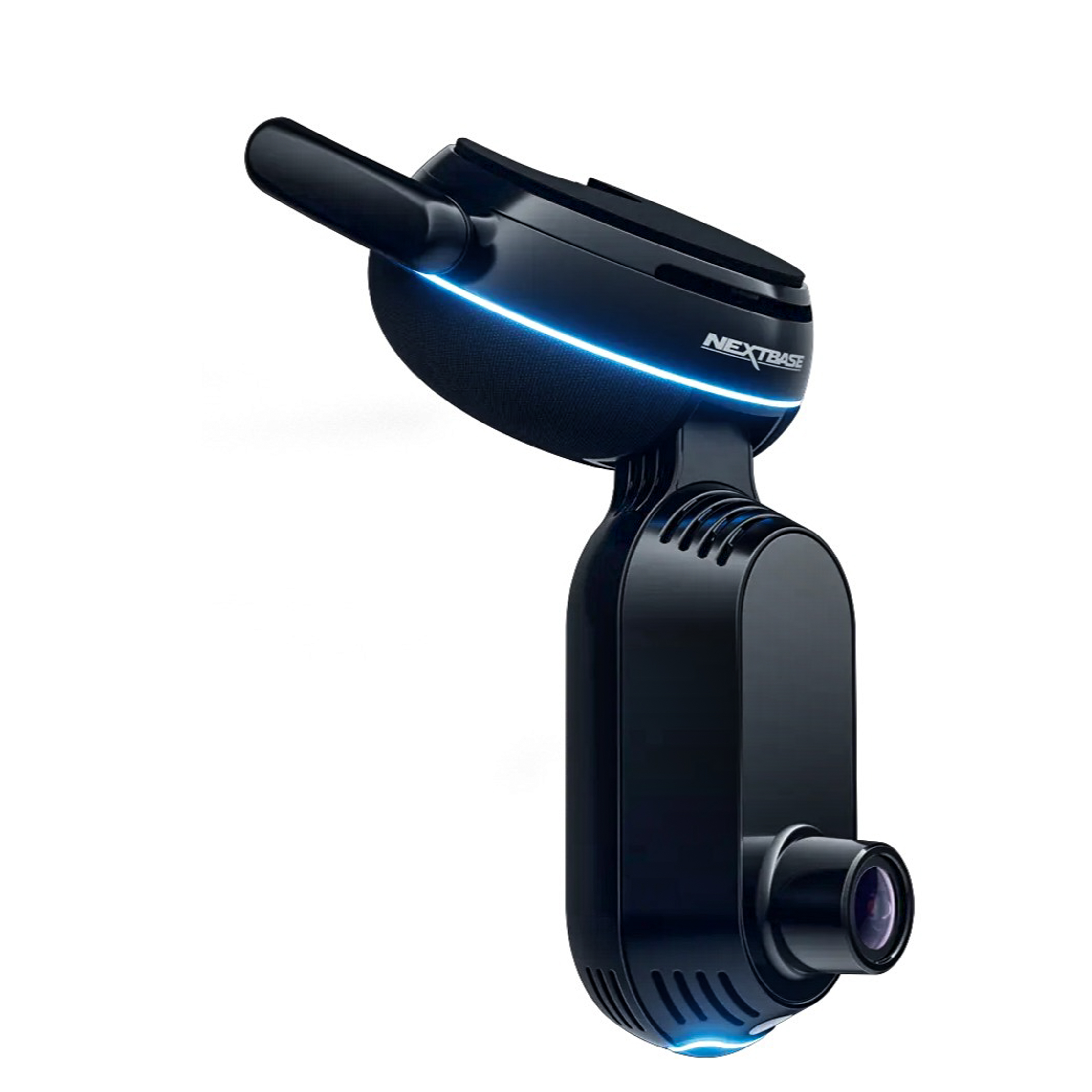
Best for security
It’s on the expensive side, but the dash cam from Nextbase has a lot to offer the security-conscious, including 4G for smartphone alerts, 4K video and an OBD cable for always-on.
Read more
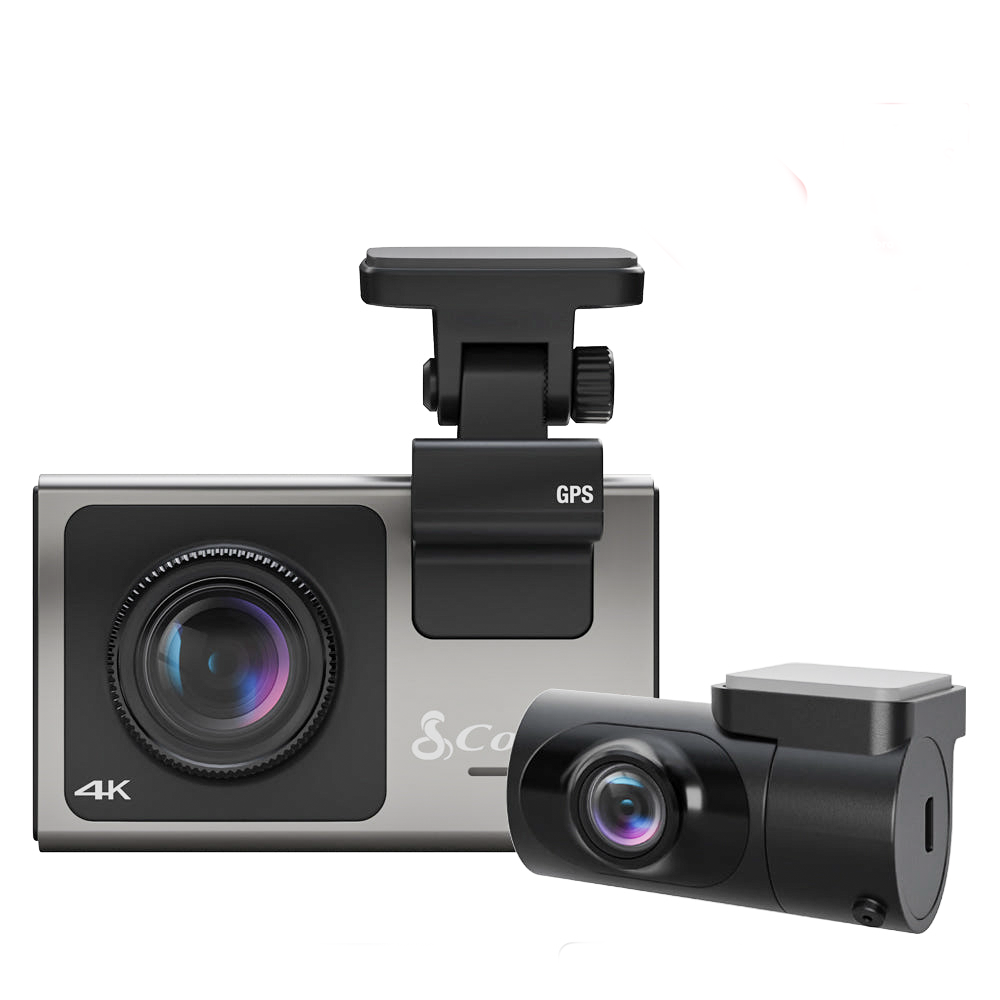
Best Alexa
This dash cam has a premium design, 4K video and Alexa voice control built in. We’re also big fans of how the GPS antenna is integrated with the dash cam’s magnetic windscreen mount.
Read more
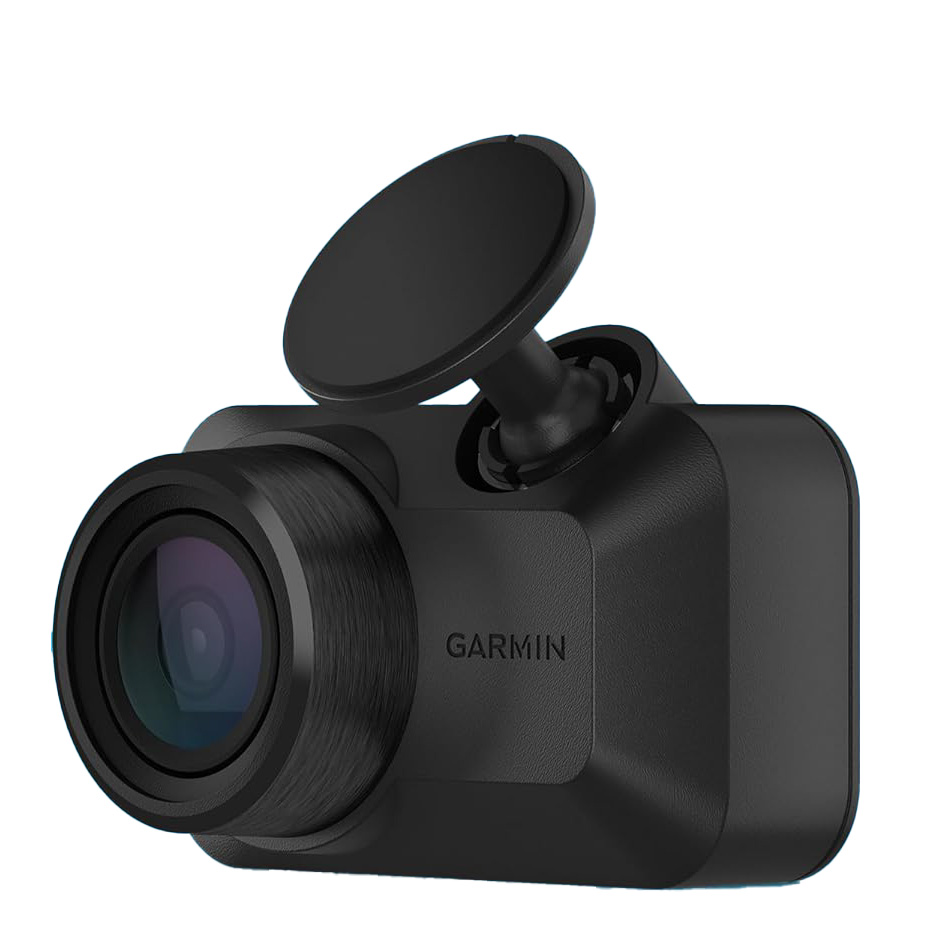
The Garmin Mini 3 takes up no space at all, yet shoots in Full HD with HDR. And with the clever Garmin Sync system, up to four can record simultaneously for 360-degree protection.
Read more
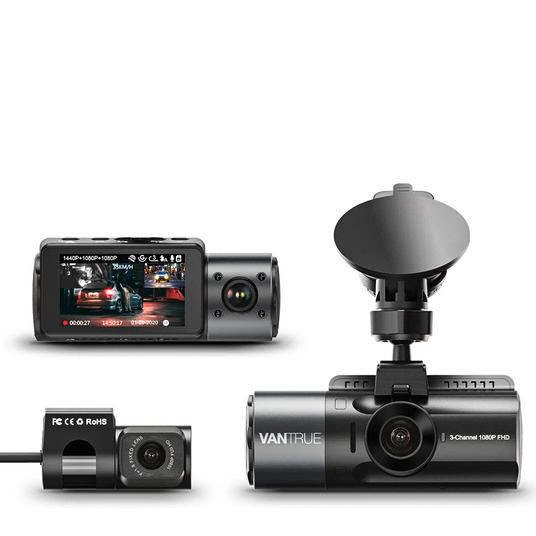
This Vantrue N4 won’t win a beauty pageant, but this dash cam is both capable and nice and compact. It includes 4K resolution, a display and an integrated interior camera.
Read more
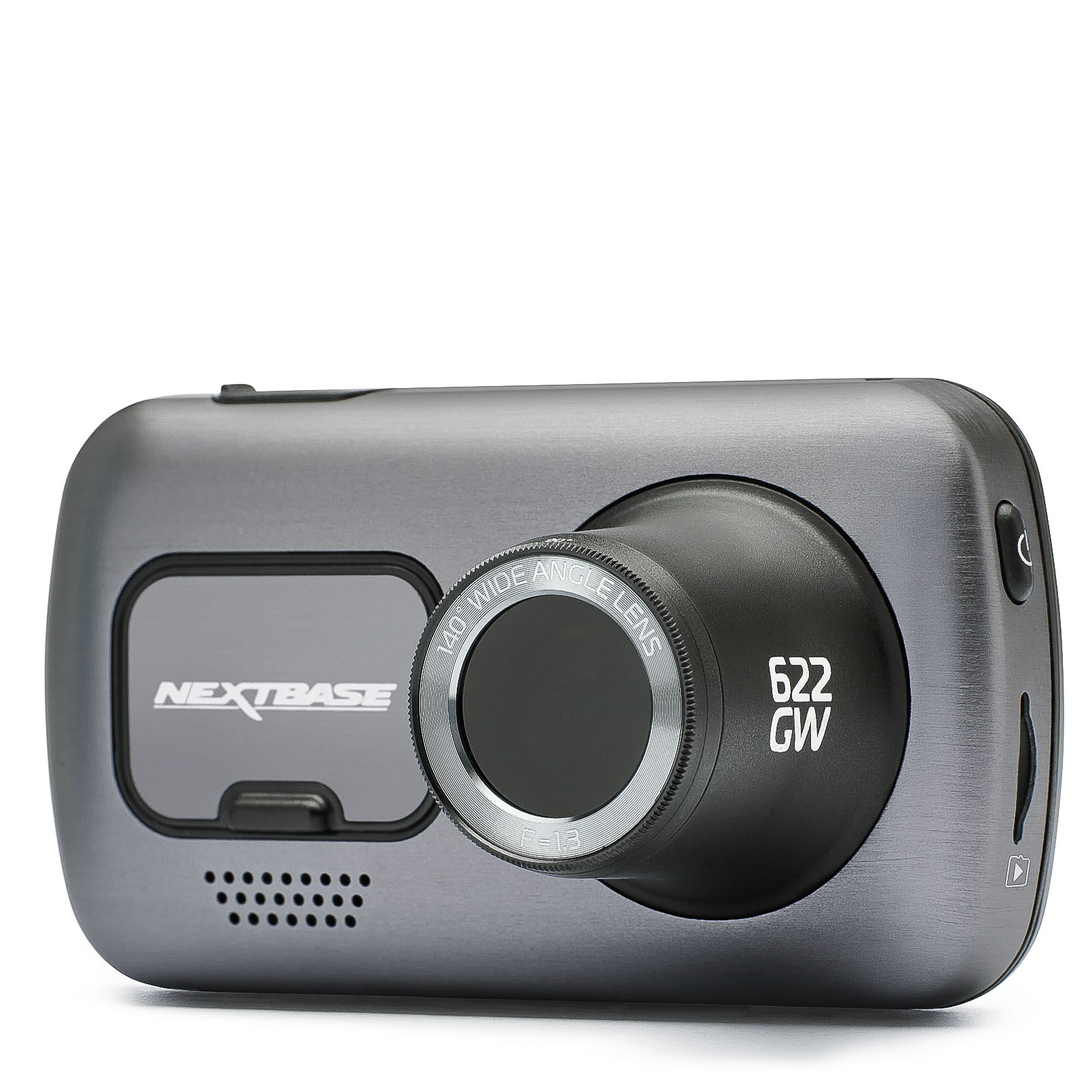
Best for safety
Available with optional interior and rear-facing cameras, the 622GW automatically calls the emergency services and shares your location when a major crash is detected.
Read more

Alistair is a technology and automotive journalist who has reviewed dozens of dash cams over the years. Whether they are $20 or $400, he has tried and tested dash cams from companies like Garmin, Thinkware and Nextbase, as well as lesser-known brands. Every model is fitted to his car and used as if his own before it is reviewed, and then judged if suitable as a recommendations in one of our buying guides. With over a decade of experience, Alistair also writes for Wired, Forbes, T3, and The Independent.
The best 3 channel dash cams
Why you can trust Digital Camera World
Best three-channel dash cam overall
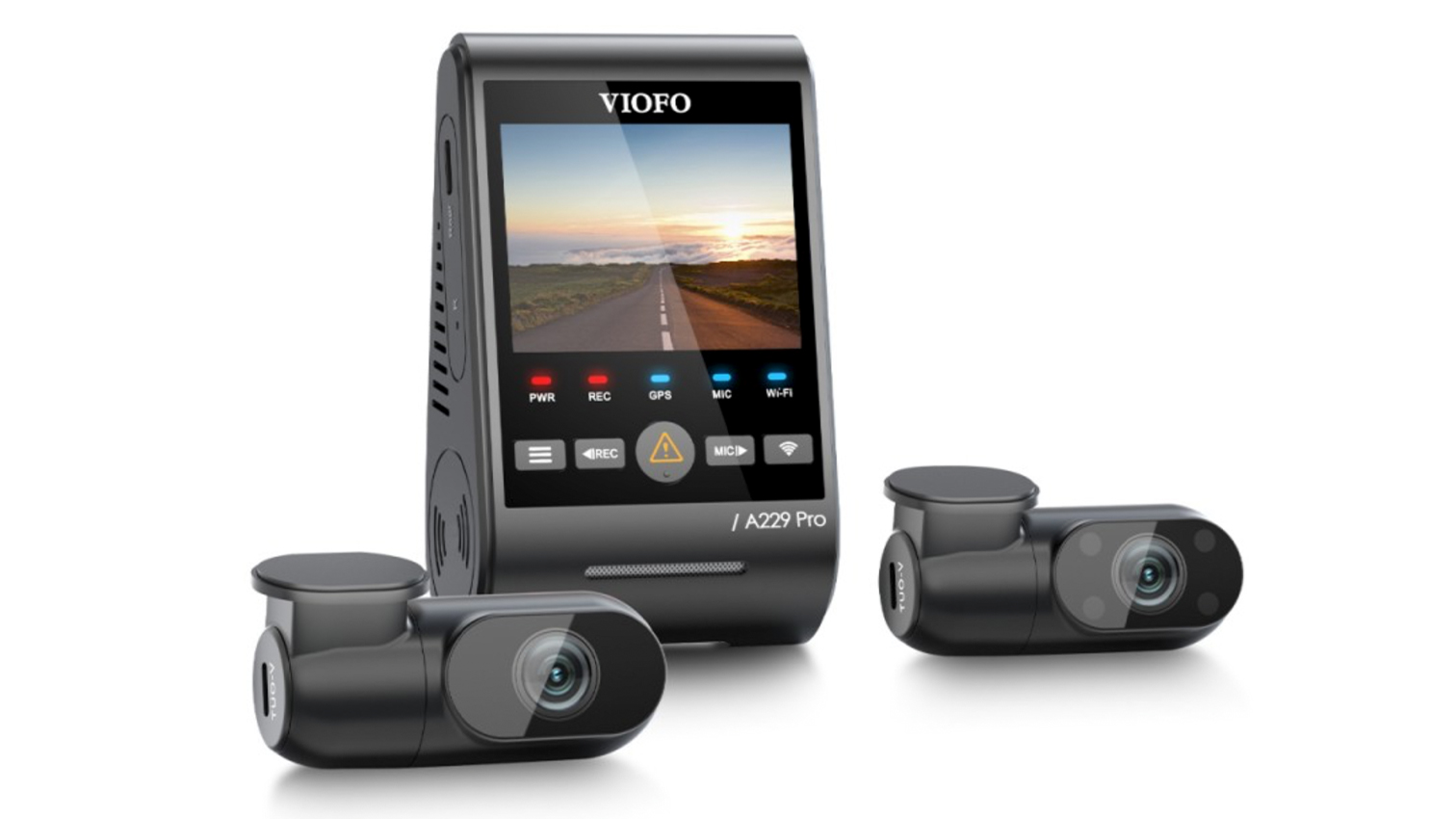
Specifications
Reasons to buy
Reasons to avoid
✅ You want high resolution: With 4K forward, 2K rearwards and Full HD for the interior, this is a seriously high-resolution three-channel system – and it has HDR, too.
✅ You want strong low-light performance: The Sony Starvis 2 imaging sensors of the front and rear cameras produce fantastic low-light footage that is sharp, clear and grain-free.
❌ You value a compact design: This is a large dash cam, especially the main unit, which includes a display, several buttons and plenty of cooling to process three high-res feeds.
🔎 This is a fantastic three-channel dash cam system that performs especially well in low light. It isn’t the cheapest or smallest, but it’s certainly one of the best 3CH systems you can buy. ★★★★½⯨
Viofo isn’t as well known as brands like Garmin, but in the last couple of years it has produced some of our favorite dash cams. The A229 Pro is the latest offering and is available as a three-channel system with 4K (2160p) video from the main unit, 2K (1440p) from the rear-facing camera, and Full HD (1080p) from the internal camera. Impressively, all three use the second-generation Sony Starvis image sensors, and all three produce HDR video too.
While the aesthetic is functional rather than pretty, we think the A229 Pro is a smartly designed dash cam that manages to cram a 4K sensor and a 2.4in display into a relatively compact body. We also like how you can use voice control instead of pressing the dash cam’s buttons, and 5GHz WiFi helps speed up transfer times when copying video to your smartphone.
A polarizing lens for the front camera, designed to help reduce dashboard reflections on the windshield, is included in the box, while a parking mode is also available but requires the optional hardwiring kit (sold separately). It lacks the clever 4G connection and OBD power cable of the Nextbase iQ, but at just over £250 we think it represents better value for money.
To learn more, read our Viofo A229 Pro 3CH review.
Best three-channel dash cam for security

Specifications
Reasons to buy
Reasons to avoid
✅ You need a security camera too: Almost unique to the iQ is how it uses a 4G connection to act as a smart security camera for your car. Hardwired setup is required, along with a data subscription too.
✅ You want an integrated interior camera: The built-in interior camera makes for a neater installation than other 3CH systems.
❌ You’re on a budget: This is one of the most expensive dash cams we’ve ever tested, and there is a subscription fee.
❌ You have an especially small car: The iQ is a very large dash cam, and takes up a fair bit of vertical space.
🔎 The smartest dash cam of them all, but also one of the biggest and most expensive. The iQ benefits from an integrated interior camera, plus Nextbase sells a high-end rear camera to create a complete three-channel system. This is an especially good option for taxi and ride-share drivers, but also anyone who wants the convenience of both the front and interior cameras being contained in the same unit. ★★★★½⯨
The Nextbase iQ is a watershed moment for dash cams, thanks to its 4G connection, how it acts like a security camera when parked, and the manufacturer’s promise of new features via future over-the-air software updates. We love it, but its very high price stops it taking the top spot in this guide. If you want the 4K model with a rear-facing camera, you’re looking at $900.
That’s an enormous amount of money for a dash cam, and don’t forget that some of the 4G-powered features require a monthly subscription too. That said, if you’re okay with the price there’s an awful lot to like here. The iQ’s 4K footage is top-drawer, the hardware feels premium, and we love how the camera receives a constant power supply from its included OBD cable. It makes us wonder why all dash cams don’t do this.
Then there’s the integrated interior camera, which works very well, and how the iQ will buzz your smartphone when it detects a parking prang, or when it thinks someone is loitering by your car. You can then view a live feed from the camera over its 4G connection, and even sound a siren to ward off a potential thief.
To learn more, see our full Nextbase iQ review
Best three-channel dash cam with Alexa
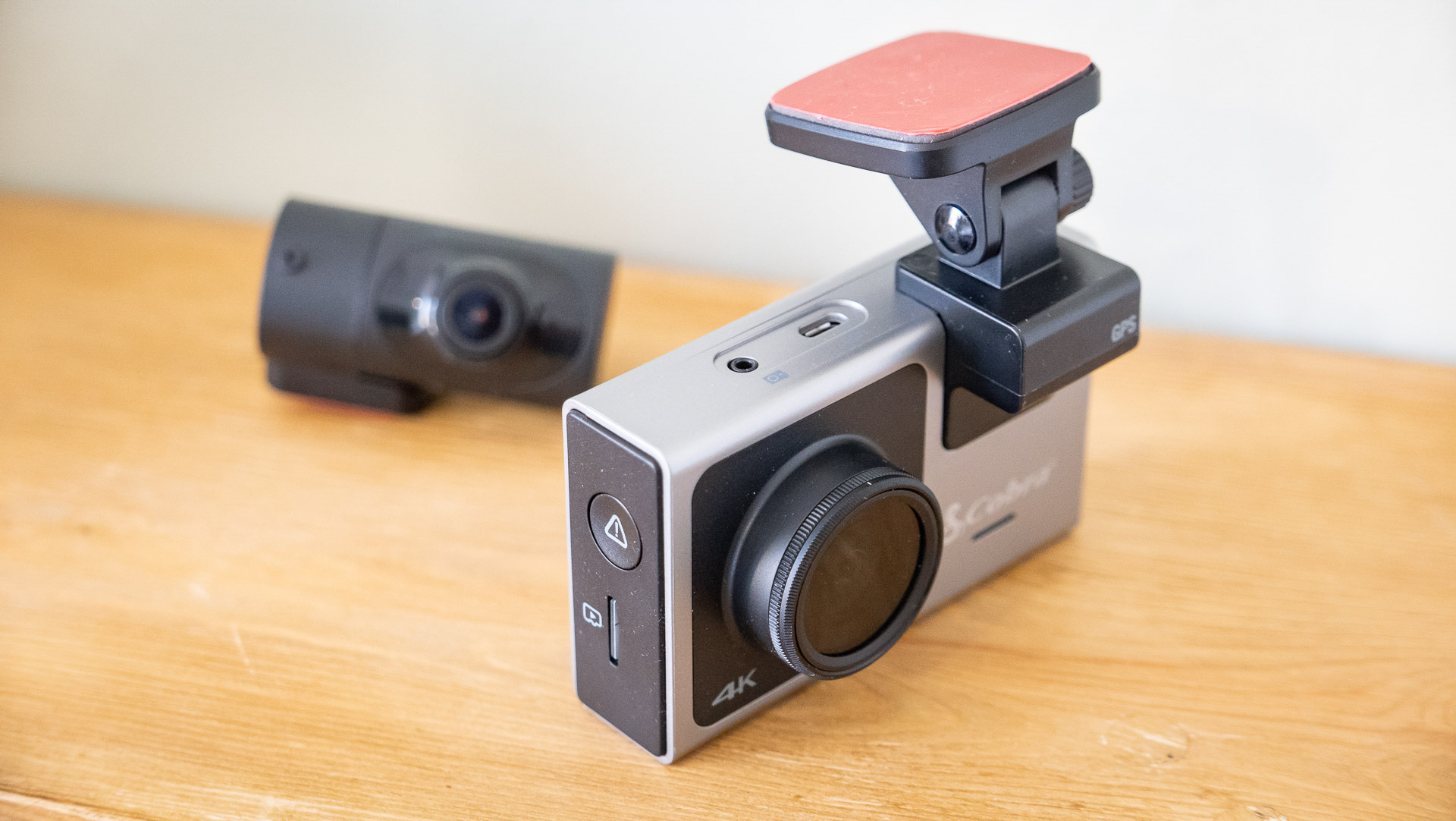
Specifications
Reasons to buy
Reasons to avoid
✅ You want Alexa built-in: This is one of few dash cams to have support for the Amazon voice assistant to your car – via your smartphone’s data connection
✅ You need high-res recordings: The Cobra SC 400D records 4K forwards, plus Full HD for both the interior and rear cameras. Drop the front to 1440p and frame rate doubles to 60 fps.
❌ You want an integrated interior camera: Unlike some systems, the Cobra's interior camera is not integrated, so requires mounting separately and connecting to the front-facing camera with a cable.
🔎 A high-quality dash cam that shoots 4K forward and Full HD for both the rear and interior views. Alexa integration is a nice bonus, and so too is the option to drop the forward resolution to 1440p in favor of a nice, smooth 60 frames per second. Not the smallest dash cam around, however, and the interior camera isn’t integrated, so can look cluttered. ★★★★½⯨
We were very impressed with the quality of video produced by this device. The 4K footage shot by the front camera is among the best we have ever seen from a dash cam, while the optional second and third channels record at a perfectly respectable 1080p. Not only is the resolution high, but exposure levels are good, white balance is well controlled and there’s a great amount of detail.
We’re also big fans of how the GPS antenna is cleverly integrated with the dash cam’s magnetic windscreen mount, and there’s Alexa too for those who want it. We must warn readers that this dash cam is fairly large; not as bulky as the Nextbase iQ, but much bigger than anything from Garmin. Those with smaller vehicles and shallow windscreens might want to look elsewhere, but otherwise this is a great (albeit rather expensive) bit of kit.
To learn more, see our full Cobra SC 400D review
Most compact three-channel dash cam
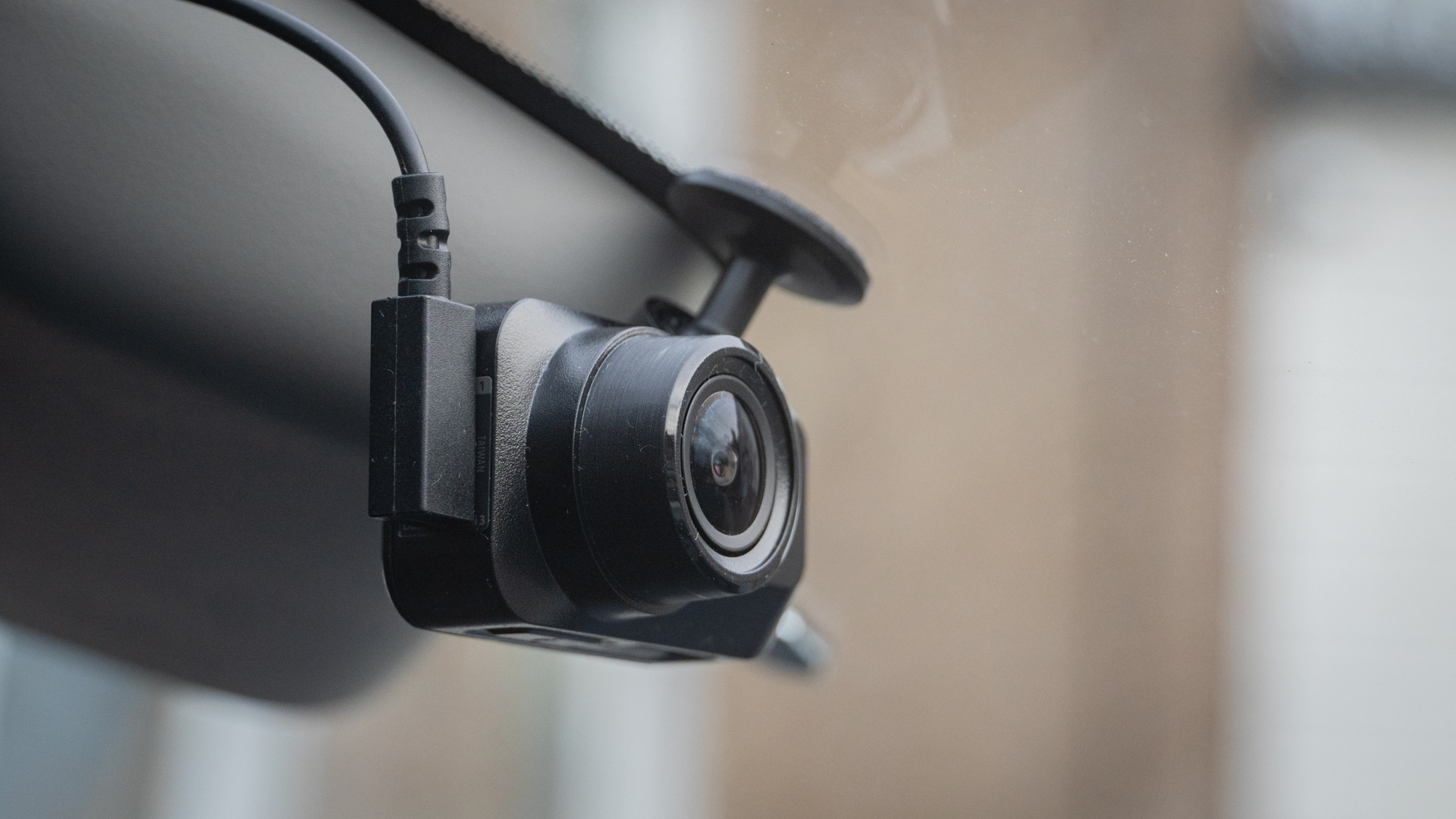
Specifications
Reasons to buy
Reasons to avoid
✅ You want the smallest dash cam possible: Even if you create a system with three Garmin Mini 3s, you’ll still lose very little space on your windshields.
✅ You have plenty of power outputs: Garmin doesn’t make dedicated rear or interior cameras. Instead, up to four of its dash cams can be synced together using the company’s phone app – but each requires its own power socket.
❌ You need a display: The Mini 3’s compact design means it doesn’t have a screen, so to view footage you have to either transfer it to a phone or computer, or pay for Garmin’s cloud storage subscription.
🔎 A tiny dash cam that produces great video, the Mini 3 can be turned into a compact three-channel system via Garmin’s smartphone app. This can be used to sync up to four of the company’s dash cams together, but each requires its own power supply. A good, albeit expensive, way to create a dash cam system with a 360-degree view. ★★★★★⯨
We’ve been a big fan of Garmin dash cams for years now, and we love the Mini range because of its small size. The Mini 3 is not sold in a three camera kit - but you can buy three separately and link them together. And even then you have a very small system that takes up minimal space on your vehicle's windows. I
Garmin's offers voice controls to make the cameras easy to use, even though there is no screen. You can use your smartphone to set things up - but here this is not essential. Cloud storage, hardwiring and a parking mode are all available too - to turn this into a grown-up set-up, although you will need to pay extra for the hardwiring kit and the online subscription.
Most importantly, the Garmin Dash Cam Mini 3 delivers great video quality - although you don't get 4K resolution.
To learn more, see our full Garmin Mini 3 review
Compact three-channel dashcam with screen

Specifications
Reasons to buy
Reasons to avoid
✅ You want a compact dash cam with a screen: This is one of very few dash cams that has a screen, yet takes up very little space on the windshield. When you consider the integrated interior camera, the N4 is especially small.
❌ You need GPS: Despite an otherwise strong spec sheet, the N4 misses out on GPS. This means your videos won’t have speed, direction or location data embedded into them.
🔎 It won’t win beauty prizes, but the Vantrue N4 is a high-quality dashcam with a compact design and an integrated interior camera. Add a rear-facing camera and you have a three-channel system that takes up very little space and represents decent value too. Be aware that the headline 4K resolution of the front camera decreases to 1440p when the second and third channels are in use. ★★★★⯨
Don’t get too drawn into this dash cam’s 4K recording capability. Because, while the front-facing camera can handle 4K on its own, when used with either the rear or interior camera, or with all three running together, that resolution is no longer available.
As a three-camera system you’re looking at a still-respectable resolution of 1440p for the front view and 1080p for the rear and interior views. Like most other systems, this dash cam has a parking mode that starts recording the moment a collision is detected (but only when the dash cam is hardwired to the car’s fuse box for a constant source of power, something you might need a professional to do). Go down the DIY route, however, and you’ll be faced by a whole bunch of cables powering each of the cameras; it can look cluttered, especially on cars with smaller windscreens.
There’s no GPS, so videos don’t have speed and location data, but we think this kit still represents decent value for money, especially considering its compact size and inclusion of a small display.
To learn more, see our full Vantrue N4 review.
The best three-channel dash cam for safety

Specifications
Reasons to buy
Reasons to avoid
✅ You want a feature-packed, 3CH dash cam: From emergency calling and Alexa, to 4K resolution, a 3in touchscreen, GPS and a frame rate of up to 120 fps at 1080p, this is a dash cam that does it all.
❌ You’re on a budget: This is a fairly expensive dash cam, even before you add in the extra interior and rear-facing cameras. That said, Nextbase’s modular interior camera is nicely designed and takes up minimal space.
🔎 A highly-end dash cam that is packed with features, the 622GW is also compatible with Nextbase’s rear camera and the company;’s clever modular cabin cam, which connects directly to the side of the main unit. It’s a smart design that takes up little windshield space, but building a full, three-channel system can get expensive. ★★★★½⯨
This dash cam begins life as a single-channel system, but can be upgraded thanks to its modular design. Nextbase sells an interior camera that plugs directly into the 622GW itself and records at 1080p through a 140-degree lens. Then you can hook up the company’s rear view camera, which sticks to the rear screen and attaches to the 622GW with a long cable; this also shoots at 180p through a 140-degree lens.
Do all this and you’ll have a three-camera system that costs less than the 4K, two-camera version of the Nextbase iQ. For your money you also get Alexa control with the 622GW, plus digital image stabilization, support for what3words, a parking mode, and a system that automatically calls the emergency services and shares your location if a significant crash is detected.
We’ve always lik3ed Nextbase dash cams, and for us the 622GW makes a fantastic two- or three-camera setup. The iQ means this is no longer the flagship of the range, but the lower price combined with a great feature set and 4K video mean the 622GW is still a dash cam we thoroughly recommend.
To learn more, see our full Nextbase 622GW review
How to choose the best three-channel dash cam
Since this guide is specifically about three-channel systems specifically, your first consideration needs to be whether the dash cam you’re looking at can handle a further two cameras.
With that box ticked, it’s time to look at models that fall into your budget, then access their resolution, frame rate and field-of-view. You want a high resolution (1440p, also known as 2K, works well), but also a quick frame rate (30fps will do, but 60fps is preferable) and a wide lens (140 degrees at a minimum).
We urge readers to consider how they plan to use their dash cam. WIll you be logging in with your smartphone and do you want to set up all of its driver assistance features? Or would you rather take a set-it-and-forget-it approach, only ever checking footage on the microSD card if the worst were to happen and you’re involved in a crash? This will help you decide what you want.
How we test three-channel dash cams
Like all other types of dash cam, we have fitted all of these three-channel modes to a car and used them for several days before reaching a verdict. They are tested during the day and at night to see how they cope with varying light, and we try to use them in a range of weather conditions too. During our time with each dash cam we assess how easy their installation and setup process is, while also looking at video quality, ease-of-use and the reliability of features like 4G connections and smartphone app notifications.
When it comes to video quality, we care about the details. License plates and road signs must be clearly visible, day and night, for a dash cam to score highly. These are the crucial details that buyers will rely on if they’re ever in a collision.
For three-channel dash cams specifically, we test out how each camera works, and whether the quality of the front-facing camera decreases when a second or third camera is installed. This is sometimes the case, with the front resolution falling from 4K to 2K, for example, due to the processing demands of three cameras all running at once.
Frequently asked questions
Can all dash cams be made into three-channel systems?
No. Some dash cams are built to only ever work on their own. Others can be connected to a rear-facing camera, while only a small number also work with a third channel. This is usually an interior view, which often comes from a second camera fitted to the main unit. In very rare cases, like with Garmin’s dash cams, two, three or four can be wirelessly connected for synchronized video recording.
How do you install a three-channel dash cam?
The main unit installs just like any other dashcam, plugging into either the 12V socket or the car’s OBD port (as is the case with the Nextbase iQ). Many of these dash cams can also be hardwired to the fuse box instead, which provides a constant supply of power and enables their parking mode.
Interior cameras are usually integrated with the front-facing camera, while the third, rear-facing camera then plugs into the main unit with an included cable. These are often very long and should be tucked behind the interior panels of your car (and often behind the roof lining) to make for a neater and less cluttered finish. Such a setup – where the interior camera is integrated and the rear view plugs into the front camera – is powered by a single 12V socket or hardwiring connection.
Are three channel dash cams useful if you're not a taxi driver?
No, three channel cams aren't just useful for taxi and ride-share drivers with unruly passengers. For instance, you might have been accused of causing a collision while being distracted by your phone. A dash cam recording into the cabin could help prove you weren’t distracted at that precise moment. The interior view can also capture altercations with pedestrians and other drivers through your side windows.
Get the Digital Camera World Newsletter
The best camera deals, reviews, product advice, and unmissable photography news, direct to your inbox!
Alistair has been a journalist since 2011 and used to be Deputy Technology Editor at IBTimes in London. His specialist tech subjects include smart home gadgets, phones, wearables, tablets and dashcams. He is the host of The AutoChat Podcast.
